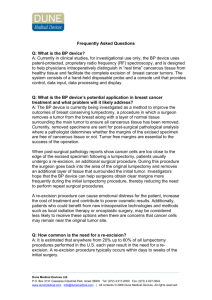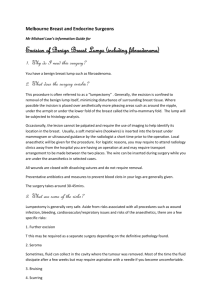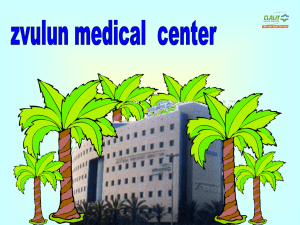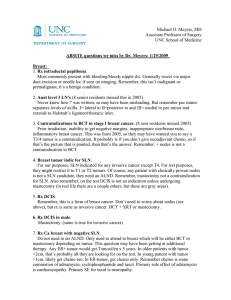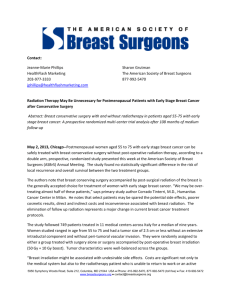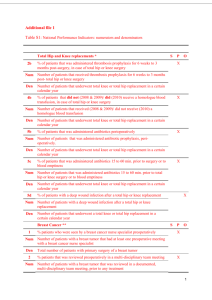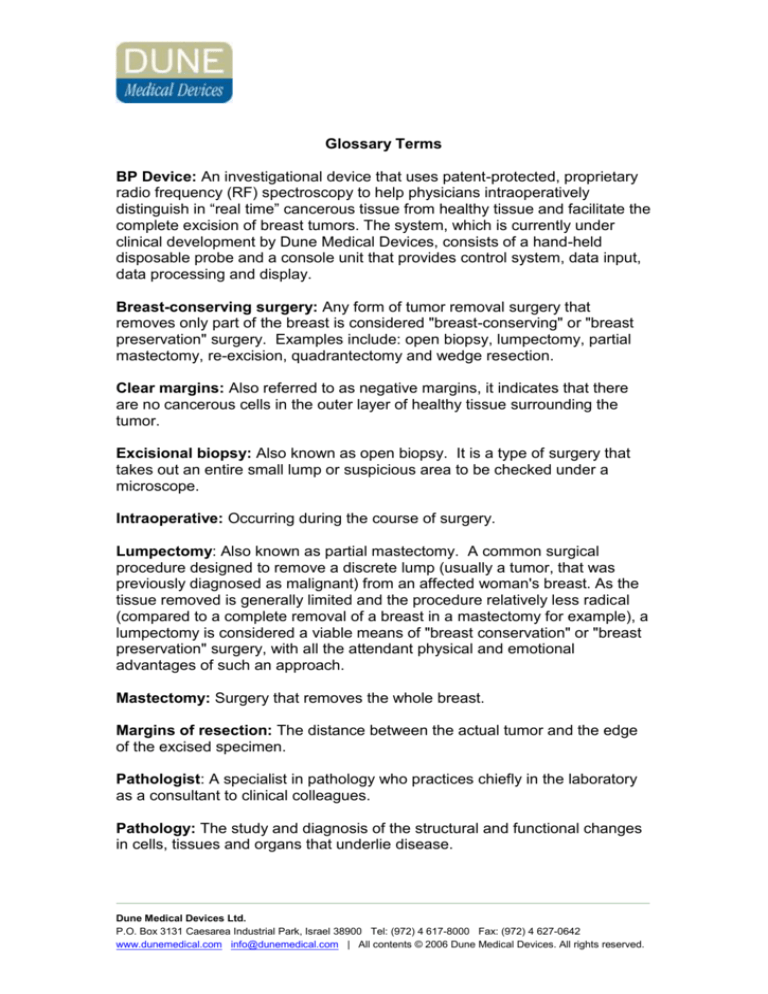
Glossary Terms
BP Device: An investigational device that uses patent-protected, proprietary
radio frequency (RF) spectroscopy to help physicians intraoperatively
distinguish in “real time” cancerous tissue from healthy tissue and facilitate the
complete excision of breast tumors. The system, which is currently under
clinical development by Dune Medical Devices, consists of a hand-held
disposable probe and a console unit that provides control system, data input,
data processing and display.
Breast-conserving surgery: Any form of tumor removal surgery that
removes only part of the breast is considered "breast-conserving" or "breast
preservation" surgery. Examples include: open biopsy, lumpectomy, partial
mastectomy, re-excision, quadrantectomy and wedge resection.
Clear margins: Also referred to as negative margins, it indicates that there
are no cancerous cells in the outer layer of healthy tissue surrounding the
tumor.
Excisional biopsy: Also known as open biopsy. It is a type of surgery that
takes out an entire small lump or suspicious area to be checked under a
microscope.
Intraoperative: Occurring during the course of surgery.
Lumpectomy: Also known as partial mastectomy. A common surgical
procedure designed to remove a discrete lump (usually a tumor, that was
previously diagnosed as malignant) from an affected woman's breast. As the
tissue removed is generally limited and the procedure relatively less radical
(compared to a complete removal of a breast in a mastectomy for example), a
lumpectomy is considered a viable means of "breast conservation" or "breast
preservation" surgery, with all the attendant physical and emotional
advantages of such an approach.
Mastectomy: Surgery that removes the whole breast.
Margins of resection: The distance between the actual tumor and the edge
of the excised specimen.
Pathologist: A specialist in pathology who practices chiefly in the laboratory
as a consultant to clinical colleagues.
Pathology: The study and diagnosis of the structural and functional changes
in cells, tissues and organs that underlie disease.
Dune Medical Devices Ltd.
P.O. Box 3131 Caesarea Industrial Park, Israel 38900 Tel: (972) 4 617-8000 Fax: (972) 4 627-0642
www.dunemedical.com info@dunemedical.com | All contents © 2006 Dune Medical Devices. All rights reserved.
Positive margins: Also known as involved margins. Cancer cells extend out
to the edge of the excised specimen.
Probe: A generic term used to refer to a device used to gather information.
The word probe is also used to describe surgical instruments, such as a
laparoscope, a device that assists with surgery on the human body by
allowing doctors to see and manipulate organs without making large incisions.
Re-excision: Also referred to as re-excision lumpectomy. The procedure
involves going back into the area where a patient has had either a
lumpectomy or excisional biopsy and taking out an additional layer of tissue
that previously surrounded the tumor. Surgeons will perform a re-excision
procedure if the margins of resection show cancer cells close to the edge of
the tissue removed during the first surgery.
Resection: Using surgery to take out tissue, part or all of an organ.
Tissue margins: The edges of an excised (or resected) surgical specimen.
The margins are examined by a pathologist to evaluate if the disease (the
cancer) has been completely removed.
*Sources include: www.breastcancer.org
Dune Medical Devices Ltd.
P.O. Box 3131 Caesarea Industrial Park, Israel 38900 Tel: (972) 4 617-8000 Fax: (972) 4 627-0642
www.dunemedical.com info@dunemedical.com | All contents © 2006 Dune Medical Devices. All rights reserved.

